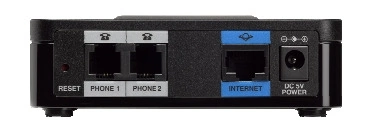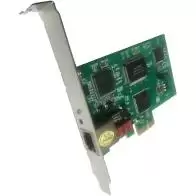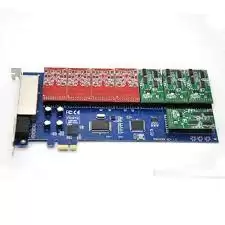Phone PBX & VOIP (SIP)
With the world changing to digital many phones need to change OR do they.
For Business with or oven without a PBX there is many ways to switch to the new age.
The most costly is to change the system out right and for many places this is a large cost out-right but then there is many cheaper ways.
The best is to keep with the system that works.
What I mean is why replace a system that works when you can add to it to make it use much of the new tech.
Many of the (non sip/VOIP) Office PBX's have ether a POTS or ISDN for the incoming lines but like in Aust, POTS and ISDN have been removed from service (Due to NBN) and so business must change.
There is many options but one of the best is to just install a SIP box before the phone system that replaces the old POTS or ISDN lines.
For the ISDN version we will talk about this a bit later but it can be done with a server/device that does the same as the POTS, will talk about this more later but its almost the same as POTS.
But for POTS.
POTS stands for Plain Old Telephone Service, another words it means the Copper pair wire from the Telephone exchange to you Office.
POTS is one of the easiest to replace as there is a few options depending on the size of the phone system in the place.
If a office (Or even a house) that has only 1 to 2 incoming lines you could install a box like a 2 port phone adaptor, Like in this photo. 2 Port Sip
2 Port Sip
This allows for up to 2 calls via sip to POTS lines, Another words from The new Sip to your old Phones and would replace the copper wire that runs to the Telephone exchange (Phone wires).
This type of configure can be done in one of two ways,
1st (Most common) is the phone company has to move your Phone numbers to a SIP and then configure this unit to handle the calls, Some ISP's could also use your NBN modem that might have a SIP function to do this instead of installing another device (but note the modem option is only used if you ISP is your phone provider)
2nd (Best) is to configure the device (Not Modem) to use whatever provider you want to.
The 1 or 2 Phone Ports from the SIP device can then be wired direct to the phone of PBX you use and so the old POTS copper wire is not used any more back to the exchange.
Please note too, this type of setup (Depending on the Phone company) can also support up to 8 ports or more. 8 Port Sip
8 Port Sip
 48 Port Sip
48 Port Sip
The down side to this tho and this is depended on the sip device suppler (Eg if you ISP provides it) then your fixed to the Phone SIP supplier and what they support, but if the devices is not locked to a provider then you can have more then one phone provider.
But then also if you had a server that had like Asterisk PBX, then at any time you want to add a sip line or change number or even provider then its the easiest thing to do.
A SIP PBX (Like Asterisk) is software based, and depending on how its setup it can interact with the Old PBX and even a new system.
The system can use the same equipment shown above but also it could have in as a internal card of POTS or even a ISDN, cards like

These type of cards can replace the old POTS & IDSN lines depending on there configure just like the boxes above, The Blue one above can support both POTS In/ Out and some can even support ISDN out, these cards are very configurable. (To know more about these cards please read the asterisk page by clicking here)
The best part to having a server onsite (Like stated above) is you the owner of it has control and so you can use the old system and may be later update it to all digital phone and there is no need to replace the server as it supports it all.
It is also great to have your own server so you can use more then one phone company for your calls, Eg have 2 lines with old provider, 2 lines with another provider and may be even have a few over seas lines with other providers, the other great advantage is settings Eg; Call recording, IVR and so on.
The great part to this is say one provider is down your calls could fall back to the other or the best is call routing to the cheapest way, as there is even a mobile phone version of units that can integrate with a pbx, this means that if you want to make a call to a mobile phone it could go out the mobile route way and in doing so could save the business so much.
We here at Haddow internet can talk to you about what can be done for your sites, but please note that we are not a phone provider at-all but can recommend some that are great to deal with and what services and or servers could work in your work site.
One of the companies we deal with for our own office phones is Australia Phone Company, We don't resell for them but just dealing with them has been great over the many years.
Please note: All info given here is only informative and much could change or be outdated at any time.